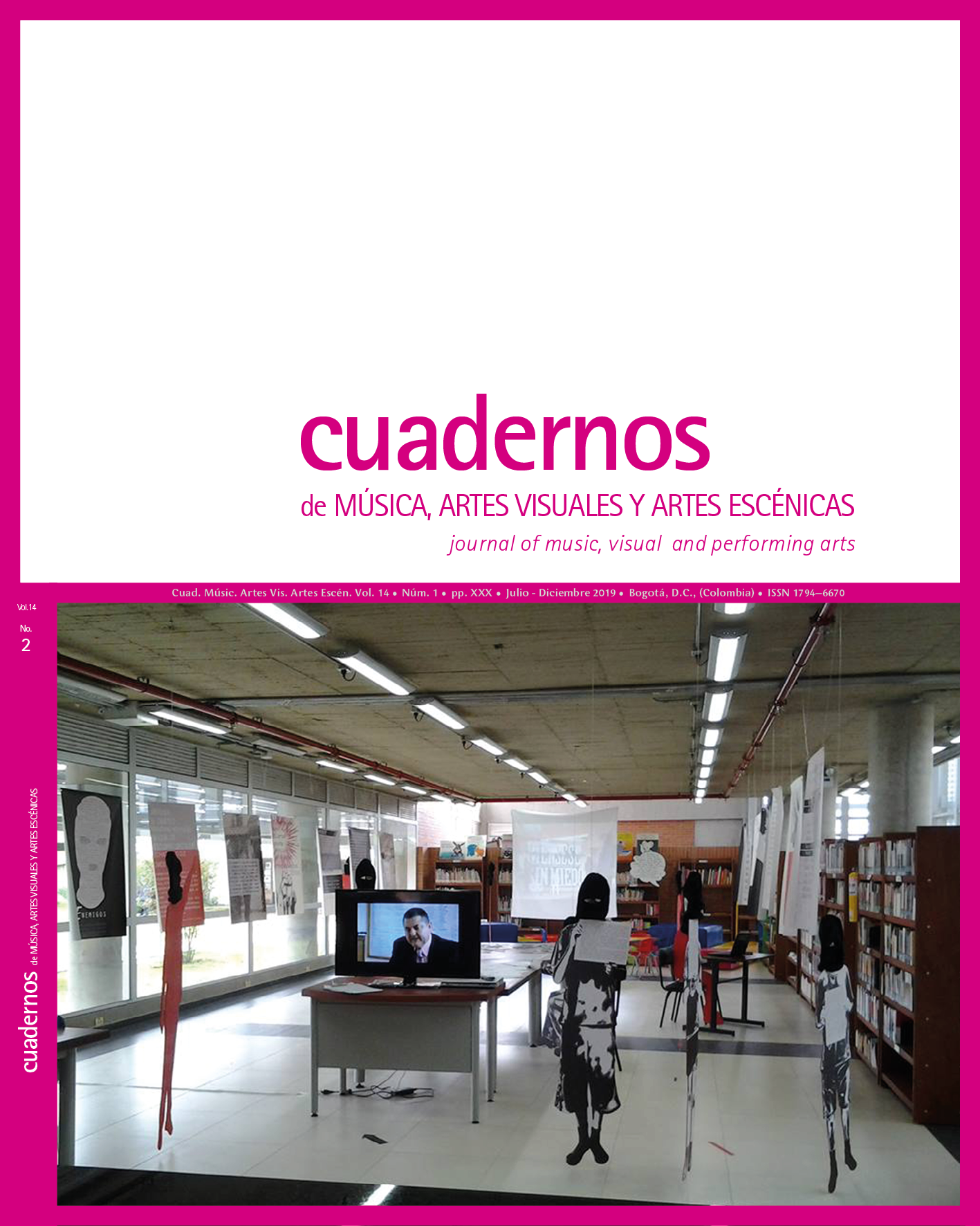Abstract
The main purpose of this research was to analyze the representations of identity, memory and resistance present in the 2015 musical compilation of forty-five songs titled Tocó cantar: una travesía contra el olvido, produced by the Centro Nacional de Memoria Histórica and thus explore the complexity of the relationship between music and the armed conflict. Through an analysis of discourse — based on the semiotics of Charles Sanders Peirce — the construction of meaning generated by the relationship between the lyrics and the non verbal sound materials of the songs was studied. The cultural dimension of the compilation was incorporated into the research through forty-five interviews conducted with people involved in the preproduction, production and dissemination of the compilation. Finally, the reception of the compilation and the relationship between its visual dimension (booklet) and sound were researched in two focus groups. It was concluded that the representations of identity, memory and resistance derived from the compilation are diverse and in some cases complicate the simplifications promoted by the disseminated discourses about the armed conflict. Furthermore, the relationship between thelyrics, non-verbal sound and the visual dimension are essential to build meanings and for the representations of memory, identity and resistance. Therefore, and contrary to the suggestion made when the call for compilation first went out and to what similar researches (which focused on analyzing the lyrics and the political, cultural and historical dimensions in which the songs take place) propose, the nonverbal sound dimension plays a fundamental role in the construction of meaning and its reception.
Angulo, Nuris Oneyda. “No más abuso”. En Tocó cantar: una travesía contra el olvido. CNMH. 2015.
Barbero, Alicia. 2005. “La activación de la imagen del enemigo y las nuevas guerras”. Papeles de
Cuestiones Internacionales 90:65-71.
Cabanerio, Ricardo. “De la guerra a la paz”. En Tocó cantar: una travesía contra el olvido. CNMH. 2015.
Cano, José Ancizar. “Masacre en la Sonora”. En Tocó cantar: una travesía contra el olvido. CNMH. 2015.
CNMH (Centro Nacional de Memorias Histórica). 2011. Las voces de El Salado.Bogotá: CNMH.
— 2014. Cantos del Carare. Bogotá: CNMH.
— 2015a. Las musas de Pogue. Bogotá: CNMH.
— 2015b. Tocó cantar: una travesía contra el olvido. Bogotá: CNMH.
Fry, Douglas P., Kaj Bj y Kaj Bjorkqvist. 2013. Cultural Variation in Conflict Resolution: Alternatives to Violence. Nueva York, EE. UU.: Psychology Press.
Fundación Chasquis. 2013. Les voy a cantar la historia: un viaje de retorno a la tierra. Bogotá: CNMH.
Hernández Salgar, Oscar Andrés. 2016. “Los mitos de la música nacional. Poder y emoción en las músicas populares colombianas 1930-1960”. Tesis doctoral, Pontificia Universidad Javeriana. Consultado: 30 de mayo de 2019: https://repository.javeriana.edu.co/handle/10554/15410
Ley 1448/2011, de junio 10, por la cual se dictan medidas de atención, asistencia y reparación integral a las víctimas del conflicto armado interno y se dictan otras disposiciones.
Murry Murri, Yajaira. “Mu embera wera”. En Tocó cantar: una travesía contra el olvido. CNMH. 2015.
Naranjo, Carlos Andrés. 2019. “Colombia: hacia una marca país competitiva”. Naranjo Publicidad.
Consultado el 30 de mayo de 2019: http://www.naranjopublicidad.com/tag/colombia/
Ritter, Jonathan. 2012. “Complementary Discourses ofTruth and Memory:The PeruvianTruth Commission and the Canción Social Ayacuchana”. En Music, Politics, and Violence, editado por John Morgan O’Connell y Salwa El-Shawan Castelo-Branco, 197-222. Wesleyan: Wesleyan University Press.
Turino, Thomas. 2014. “Peircean Thought as Core Theory for a Phenomenological Ethnomusicology”. Ethnomusicology 58 (2): 185-221.
Wade, Peter. 2002. Música, raza y nación: música tropical en Colombia. Bogotá: Vicepresidencia de la República de Colombia.
This journal is registered under a Creative Commons Attribution 4.0 International Public License. Thus, this work may be reproduced, distributed, and publicly shared in digital format, as long as the names of the authors and Pontificia Universidad Javeriana are acknowledged. Others are allowed to quote, adapt, transform, auto-archive, republish, and create based on this material, for any purpose, provided the authorship is duly acknowledged, a link to the original work is provided, and it is specified if changes have been made. Pontificia Universidad Javeriana does not hold the rights of published works and the authors are solely responsible for the contents of their works; they keep the moral, intellectual, privacy, and publicity rights.
Approving the intervention of the work (review, copy-editing, translation, layout) and the following outreach, are granted through an use license and not through an assignment of rights. This means the journal and Pontificia Universidad Javeriana cannot be held responsible for any ethical malpractice by the authors. As a consequence of the protection granted by the use license, the journal is able to publish retractions or to correct information already published. Publishing contents in this journal does not generate royalties for contributors.



